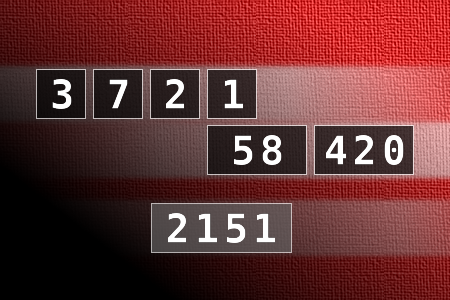Calculate the number 2151
NUMBERMANIA: Calculate the number 2151 using numbers [3, 7, 2, 1, 58, 420] and basic arithmetic operations (+, -, *, /). Each of the numbers can be used only once.Correct answers: 14
The first user who solved this task is Fazil Hashim.
#brainteasers #math #numbermania


